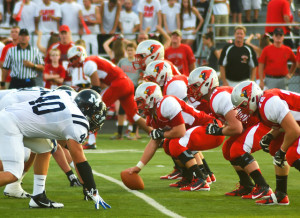Eric Pelly was eighteen years-old when he collapsed at the dinner table and died. The Pelly’s were informed that several rugby concussions he received in the weeks leading up to his death in 2006 caused swelling in his brain. Sadly, high school athletics have not made changes sufficient to prevent more untimely deaths. Andre Smith was only seventeen years-old when he died due to blunt force trauma during a football accident on the final play of the game. Smith was the seventh high school football player to die nationwide in 2015.
was eighteen years-old when he collapsed at the dinner table and died. The Pelly’s were informed that several rugby concussions he received in the weeks leading up to his death in 2006 caused swelling in his brain. Sadly, high school athletics have not made changes sufficient to prevent more untimely deaths. Andre Smith was only seventeen years-old when he died due to blunt force trauma during a football accident on the final play of the game. Smith was the seventh high school football player to die nationwide in 2015.
There are 1,071,775 high school football athletes—the NCAA has 5.5% and the NFL only has .07% of the number of athletes. With this many athletes in just football alone, the risks of the young athletes are increasingly high with a shortage of full-time athletic trainers at practices and games. In 2015 The Journal of Athletic Training reported that only 37% of the nation’s public high schools have full-time athletic trainers. Nearly all causes of deaths in sports are influenced by the care provided in the first five to seven minutes following the injury.
Unfortunately, many states do not require high schools to have medical devices on hand or strategies and procedures in place. When it comes to concussion management, emergency action plans, and defibrillators, not a single state meets the minimum best practices requirement. Athletic trainers are indispensable when it comes to determining threat levels that the different injuries pose. Ultimately, many coaches who are not trained as medical professionals and end up evaluating the players’ injuries, which for the most part, dictates the outcome of the athlete’s injury.
Additionally, high school students are more susceptible to permanent damage than adults. Eric Pelly died from Second Impact Syndrome, which occurs when a second concussion takes place before the first concussion has fully healed. Often, the second concussion can be unremarkable and the athlete may not suffer loss of consciousness and continues to play. The result is often death due to swelling of the brain. This condition mostly affects athletes under the age of 25 because 90% or more of the diagnosed concussions do not result in loss of consciousness. Of the deaths suffered by this syndrome, 95% of them occur in athletes under the age of eighteen.
Dr. Robert Cantu, an expert on concussions, recommends that children do not play contact sports until the age of 14, and should avoid blows to the head whenever possible. The brains of high school athletes are particularly vulnerable to trauma. The protective coating surrounding the nerves aren’t fully developed as an adult brain, and can leave the brain tissue more vulnerable to disruption. This makes concussion recovery slower in younger athletes, which can be detrimental to the full and complete recovery of the brain development.
The issue that arises with high school football is that they are governed on a state by state basis. Unlike the NFL or the NCAA, there is no governing body that implements safety measures required for all schools nationwide. In March 2015, high school athletic association officials from all 50 states met with the National Athletic Trainers’ Association and the American Medical Society for Sports Medicine to discuss prevention of catastrophic injuries. However, no changes actually resulted from this meeting. High schools nationwide need to recognize they are responsible for the lives of their athletes and must find a solution to increase the quality and quantity of athletic trainers in order to protect their student athletes.
